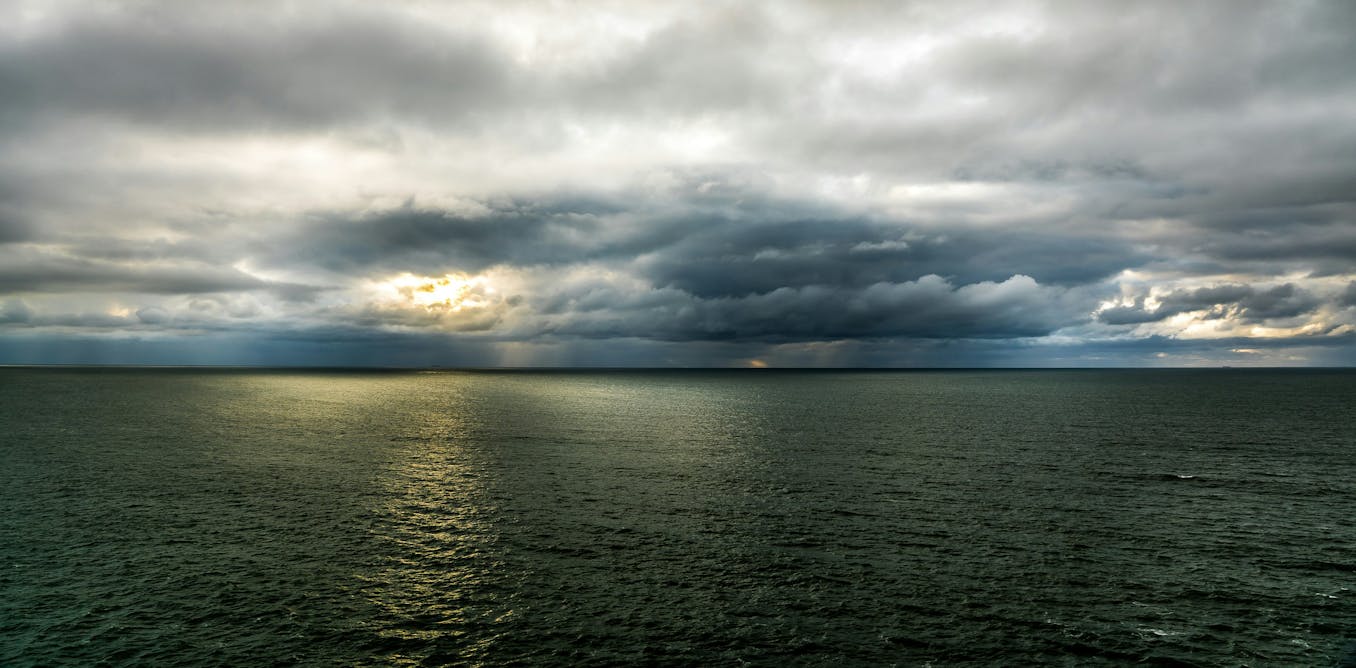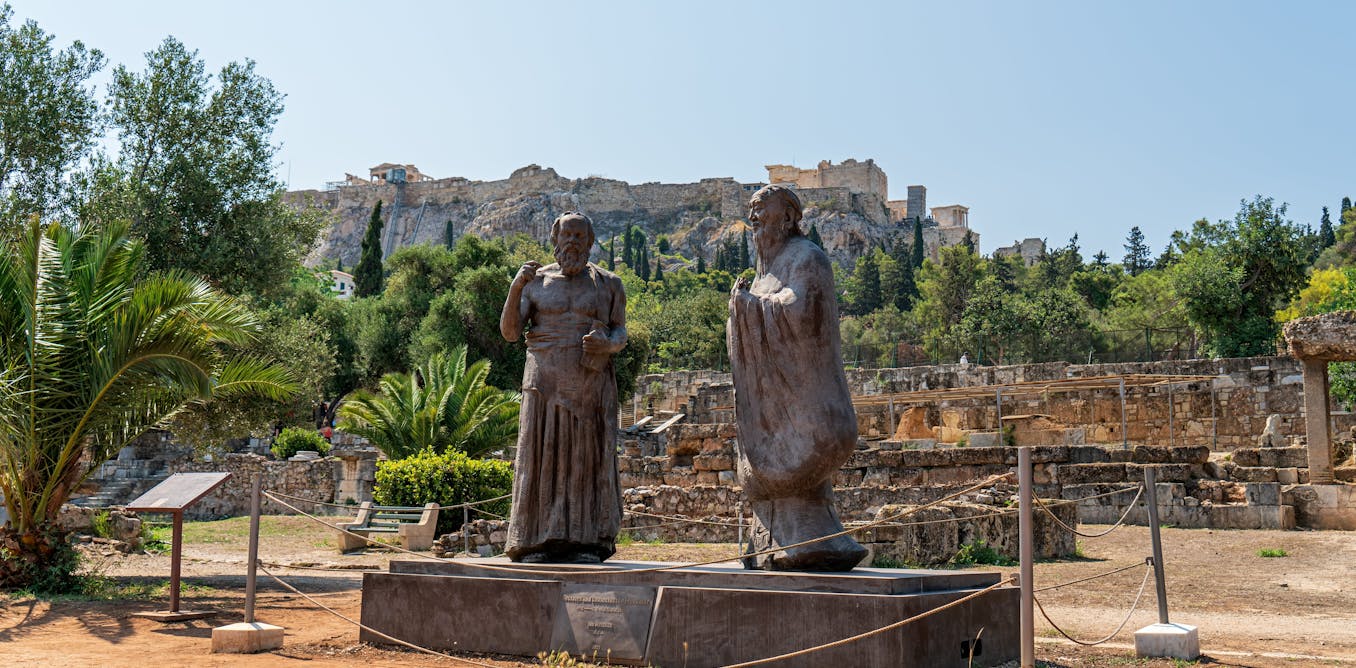Get ready to immerse yourself in the bustling and vibrant streets of Naples, Italy, in this mesmerizing 6-hour walking tour video by Prowalk Tours. Starting at the Montesanto Train Station, join us on an enchanting journey through the colorful chaos that is Naples, filmed in July 2023.
Step into the historic streets, hidden alleyways, and breathtaking vistas of this ancient city as we explore its rich culture and vibrant atmosphere. From the bustling Pignesecca Market to the iconic Church of San Nicola alla Carità, Spaccanapoli, and the stunning Basilica di Santa Chiara, this tour showcases the best of Naples.
Discover the soul of Naples like never before as we wander through the charming alleys, soak in the Mediterranean charm, and uncover hidden gems along the way. With stops at iconic landmarks such as Piazza del Gesù Nuovo, Via dei Tribunali, and the Duomo di Napoli, this walking tour offers an unforgettable glimpse into the heart of Naples.
Don’t miss out on this captivating journey through one of Italy’s most vibrant cities. Join us on this virtual adventure and experience the magic of Naples like never before! 🚶♂️🌆🍕 #Naples #Italy #TravelGoals
Check out the complete list of stops and locations in the video description and get ready to explore Naples in a whole new way with Prowalk Tours. Don’t forget to like, share, and subscribe for more unforgettable walking tours around the world!
Watch the video by Prowalk Tours
Welcome to Naples, one of Italy’s most vibrant and welcoming cities. Naples is often overlooked as a tourist destination. Naples is the capital city of the southern Campania region. Other popular sites in the Campania region include, Sorrento, Amalfi, Positano, Capri, Procida, Ischia, Mt. Vesuvius, Pozzuoli, Capua, Paestum and many more.
Naples is famous for its chaotic character, where streets are full of authentic Italian life and culture. Pescheria Azzurra is one of the city’s most famous fish shops where you can eat as well. The shop first opened in 1947.
Graffe are a kind of fried donut made from flour and potatoes. They are my absolute favorite Italian pastry! Pignasecca is the oldest market in Naples. Stalls sell all kinds of fresh products. But the market is particularly famed for its fresh fish.
The name of the market means dried pine and possibly refers to gardens that once occupied this area. Naples is a city obsessed with football. The banner hanging over the street is a SCUDETTO.
A scudetto is a shield -shaped badge with the colors of the Italian flag , which is worn on the playing uniform by the team that won the top national professional championship. Neapolitans are known for their theatricality – it’s a great city for people watching!
Naples is also one of the best cities for street food, with specialties’ like fried pizza. Tripe is also a popular street food. Pignasecca market is a mix of temporary stalls and permanent small food shops. Specialist food shops like this salumeria are very popular.
The name Pignasecca also has another story behind it. Legend says a bishop ‘excommunicated’ one of the pine trees here which suddenly dried up. Pignasecca market is open from Monday to Saturday, from 9.00 to 19.00. This area was once owned by the Pignatelli di Monteleone family.
The area was once referred to as Biancomangiare because of the meringue that was produced here. The church was founded in 1647 and designed by Onofrio Antonio Gisolfi. Building was interrupted by the plague that struck the city in 1656, and was completed in 1682 by Cosimo Fanzago.
The nave has a series of frescoes dating from 1696 by Francesco Solimena, depicting in the lunettes the life of St. Nicholas, Virtue and the Apostles. The side chapels house more 17th and 19th century paintings and frescoes.
San Gennaro is the patron saint of Naples and a hugely important figure for the city. We are currently walking down Via Toledo which stretches almost 1.2 kilometers long. Spaccanapoli is the most famous street in Naples.
Panini napoletani are a typical street food made from cheese and ham wrapped in pastry. Spaccanapoli is a narrow, straight street running right through the heart of historic Naples. Talarico is a historic leather store as the current owner will now explain!
Spaccanapoli literally means ‘splits Naples’ because it seems to divide the city in two. Spaccanapoli is actually a nickname. The street is officially called via Benedetto Croce and via San Biagio dei Librai. In the center of this square is the Obelisk of the Immaculate made of intricately carved white marble.
It is 72 feet (22 meters) tall and built in Baroque style. The striking Church of Gesu Nuovo is one of the biggest and most important in the city. It is an ode to Baroque art and architecture and some of the most important Neapolitan artists of the period worked on it.
The church began life as a palace, the Palazzo Sanseverino, built in 1470. In the 15th and 16th centuries, the palace was renowned for its beautiful interiors. In the mid 16th century, palace owner Ferrante Sanseverino opposed the Spanish rule over Naples.
Angered, the Spanish exiled him in 1552 and confiscated his property. In 1584, the palace was bought by the Jesuit religious order. Between 1584 and 1601, the Jesuits transformed the palace into a church. The Jesuits did not save any part of the sumptuous palace interiors in their transformation.
The chapel of San Francesco Saverio houses an alterpiece depicting the saint’s ecstasy by Giovanni Bernardino Azzolino. The marble decorations in the nave were executed by Cosimo Fanzago in 1630. This chapel contains another altarpiece by Giovanni Bernardino Azzolino depicting the Virgin Mary, Jesus and Martyrs.
Above the door is a 1725 fresco by Francesco Solimena depicting Heliodore hunting the temple, a scene from the Old Testament. The studded facade of the church is one of the only parts of the original palace that was maintained.
This double monastic complex was built in 1313–1340 by Queen Sancha of Majorca and her husband King Robert of Naples. King Robert of Naples is also buried in the complex. The church was first constructed in Gotico Angioiano style. The floor was paved with a design by Ferdinando Fuga.
Behind the main altar is the tomb of King Robert of Anjou, which was sculpted by Pacio and Giovanni Bertini in 1343.
In the side chapels are the tombs of the Bourbon king of Naples, Francis II and his consort Maria Sophie of Bavaria, as well as those of Queen Maria Christina of Savoy and of the national hero Salvo D’Acquisto.
The interior was reconstructed from 1742 to 1762 by Domenico Vaccaro, Gaetano Buonocore, and Giovanni del Gaizo, and refurbished in a Baroque style.
After the edifice was partially destroyed by a fire after the Allied bombings during World War II, it was brought back to the alleged original state by a disputed restoration, which was completed in 1953. The bell tower, separated from the main edifice, was begun in 1328 but was completed only in Renaissance times.
The basilica of Santa Chiara faces Via Benedetto Croce, which is the easternmost leg of Spaccanapoli. Spaccanapoli is the lower (Decumanus Inferiore) and southernmost of the three decumani, or east-west streets, of the grid of the original Greco-Roman city of Neapolis.
The three decumani were (and still are) intersected by numerous north-south cross-streets called cardini, together forming the grid of the ancient city. If you are enjoying this tour, please leave a Like on the video and Share it with a friend. Thank you! Palazzo Venezia is a palace that dates from the 15th century.
The gardens house a little chapel called the Grotta della Madonnina. This ‘Pompeian’ house was added in the Neoclassical era. Some of the rooms of the palace are open to visitors with permanent exhibitions of ceramics and pottery. Visit in spring to see this incredible wisteria plant in flower!
From the medieval period up to the 18th century, Spaccanapoli was lined with important convents and religious complexes, like Santa Chiara which we just visited. Famous Naples streetfood also includes sweet specialities like sfogliatelle. Spaccanapoli was also once lined with the palaces of important families.
This ornate obelisk is surmounted by a bronze statue depicting a blessing San Domenico. To enter the church you climb up an impressive flight of stairs. Filming is not allowed inside. The obelisk was built between 1656 and 1658 but the statue of San Domenico was only added in 1747.
The church of San Domenico was built between 1283 and 1324. This is the church of Sant’Angelo a Nilo, famous for containing a tomb by Donatello. These are cannoli, typical pastries from Sicily. In Naples, you will see blue football flags everywhere, celebrating the Azzurri, the city’s team.
Chilli peppers are another classic product you can find in Naples. This marble sculpture from ancient Rome depicts the God of the Nile with a sphinx and cornucopia. It is original. The street now referred to as Spaccanapoli already existed in Roman times. Stall also sell antiques and religious objects.
Construction on the church began in 1591 but wasn’t completed until 1758. The central nave fresco depicts the Assumption of the Virgin by Jacopo Cestaro. The interior is a classic example of Neapolitan baroque style. The church houses several important sculptures in wood, like this one of Christ.
Roman remains have been dug up along Spaccanapoli under the Santa Chiara monastery. During the Renaissance, Spaccanapoli underwent significant changes. Gothic palaces and other buildings were pulled down and new structures built in their place sometimes using the old materials. This wonderful ‘hospital’ is dedicated to dolls and other toys.
This is the museum which is separate from the actual tiny workshop which sells and repairs all kinds of toys. This museum full of doll parts has a bit of a creepy atmosphere is you ask me. 🙂 The hospital was founded at the end of the 19th century by Luigi Grassi.
It costs 3 euros to visit the museum. You can also see inside the ‘ambulatorio’ where the repairs take place. Here you can see the fascinating and painstaking work that goes into repairing vintage and new toys.
Apparently, you can also purchase repair kits for children so they can practice being doll nurses and doctors. Despite the good intentions behind the establishment, I wouldn’t want to find myself alone in here at night!
Giovanni Francesco Mormando and Giovanni Francesco di Palma were the principal architects who transformed Spaccanapoli in during the Renaissance. It’s not easy to be on a diet in Naples… You’ll see a lot of tributes to Maradona in Naples.
The Argentine footballer played for Naples from 1984 to 1991 and led the team to two Serie A titles, making history as the first southern Italian team to achieve such success. This giant mural depicts San Gennaro, patron saint of Naples.
San Gennaro’s bones and blood are preserved as relics at the cathedral in Naples. Do you see the blue bucket suspended on the building to the left? Neapolitans still use these on a system of pulleys to collect deliveries.
The name of this street, zite, possible referred to the number of spinsters that lived along it (zitelle). Alternatively, it might have been named after the Zita family that lived here. This was the main decumanus — east-west street— of the ancient Greek and then Roman city of Neapolis.
This is the obelisk of San Gennaro, built during the baroque period and the oldest of its kind in Naples. Naples Cathedral (duomo) is the main church of the city. We are entering from a side entrance, the facade is much more spectacular.
The cathedral is widely known as the Cathedral of San Gennaro, in honour of the city’s patron saint. The sculptural group in the apse was designed by Pietro Bracci and is clearly inspired by Bernini’s Cattedra in St Peter’s in Rome.
The present cathedral in Angevin gothic style was commissioned by King Charles I of Anjou. Under the apse the peristyle of a late imperial domus can be seen. Under the apse there is also a stretch of Roman aqueduct and a stretch of Greek road on an inclined plane.
Construction on the cathedral continued during the reign of King Charles I of Anjou, Charles II (1285–1309) and was completed in the early 14th century under Robert of Anjou. The cathedral was built on the foundations of two palaeo-Christian basilicas, whose traces can still be seen.
Underneath the building, excavations have revealed Greek and Roman artifacts. This is the Royal Chapel of the Treasure of San Gennaro, where the church’s most important art works and relics are housed. It is decorated with frescoes by Domenichino and Giovanni Lanfranco. There are also altarpieces by Domenichino, Massimo Stanzione and Jusepe Ribera.
The rich high altar is by Francesco Solimena, the bronze railing by Cosimo Fanzago and other artworks, including a reliquary by French masters of the 14th century.
In the years 1526 to 1527, Naples endured a siege by the French, a resurgence of the plague, and a volcanic eruption by Vesuvius with its accompanying earthquakes. The surviving Neapolitans pledged to erect a chapel to their patron saint, San Gennaro. Work began in 1608, ended in 1646.
If you are enjoying this tour, please leave a Like on the video and Share it with a friend. Thank you! The central nave is around 100 meters long and 35 meters high. The pilasters incorporate ancient Roman columns.
The facade was restructured many times and the one you see today is actually a neo-Gothic facade from 1905. It was designed by Errico Alvino and constructed in marble. The church of the Girolamini dates from the 16th century.
Murals to Maradona can be see all over the city, with many new ones added since his death. Granita is another must try, an icy drink perfect for summer days in the city. This is a monument honoring San Gaetano erected between 1657 and 1664.
The saint’s remains are housed in the church behind. The church is called the Basilica di San Paolo Maggiore and was built in the Baroque style.
San Lorenzo is located at the precise geographic center of the historic center of the ancient Greek-Roman city, at the intersection of via San Gregorio Armeno and via dei Tribunali. The church’s origins derive from the presence of the Franciscan order in Naples during the lifetime of St Francis of Assisi himself.
The site of the present church was to compensate the Franciscans for the loss of their earlier church on the grounds where Charles I of Anjou decided to build his new fortress in the late 13th century. The Baroque chapels of Cacace and Sant’Antonio were both designed by Cosimo Fanzago.
The luminous apse dates from the 13th century and was built in French Gothic style. Love and luck, wise words from a Neopolitan! Via San Gregorio Armeno is famous for workshops that make presepi, or nativity scenes.
The street follows the ancient Greek plan of the city and links Via dei Tribunali with Spaccanapoli. The street is full of artisanal workshops that make figurines for nativity scenes. These are not just your traditional nativity characters but also famous people like the Queen and Maradona!
It is possible that the tradition for making figurines on the street dates back to classical times. In that period, there was a temple dedicated to Ceres, to whom citizens offered small terracotta figurines, made in nearby workshops, as votive offerings. The church of San Gregorio Armeno dates from 1576.
Shops also sell elaborate scenery for the nativities. You can find nativity scenes in many of the city’s churches and in exhibitions at Christmas time. This tradition began in the 18th century. There’s never a shortage of drama in Naples.
You can even add cars and scooters into your nativity scene. Here is a woman demonstrating the age-old bucket delivery technique. Here you can see what a full blown presepe looks like, with elaborate scenery and dozens of figures engaged in different activities. Scenes include lights and even running water.
You can also buy romantic painted scenes of Naples in the 18th century in these shops. Some of the workshops lining Via san Gregorio Armeno were established decades ago. San Paolo Maggiore is located on the site of the 1st-century temple of the Dioscuri.
This is the entrance to Naples underground, a huge network of caves and tunnels. Pizza a portafolio is a kind of streetfood made from pizza folded in a way that makes it easy to eat on the move.
We are back on Via dei Tribunali which stretches for about three-quarters of a mile. Under the arcades are lots of restaurants and shops popular with tourists. Outside the church of Santa Maria delle anime del purgatorio there is a skull representing the world of the dead, a common theme in Naples.
Another large mural pays homage to the actress Sophia Loren. Pulcinella originated in commedia dell’arte of the 17th century and became a stock character in Neapolitan puppetry. It has become customary to rub the nose of this bronze statue by Lello Esposito for good luck.
Via dei Tribunali is so named because the road ends at the city’s courthouse. Sorbillo is a very famous pizzeria that now has branches in America too. This tower dates from the 11th century and is one of the oldest in southern Italy.
You can see how it has been constructed reusing ancient remains. Like Spaccanapoli, Via dei Tribunali is lined with some of Naples’ most important monuments. Ahead is the church of San Pietro a Majella which was built in Gothic style with Baroque additions.
This square is named after composer Vincenzo Bellini who studied at the Naples Conservatory. In the center you can see the remains of the ancient walls of Greek Neapolis. The square is also lined with elegant 16th and 17 century palaces like palazzo Castriota.
The leafy square is an oasis of calm in the heart of chaotic Naples! If you are enjoying this tour, please leave a Like on the video and Share it with a friend. Thank you! In the center is a momument to Bellini, who was born in Catania in 1801.
The walls are made from tuff and date from around the 4th century BC. Port’Alba is a historic gateway to the city dating from 1625. This area has a several bookshops that usually have stalls outside. Piazza Dante is named after the poet Dante Alighieri.
In the second half of the eighteenth century, architect Luigi Vanvitelli designed this ‘Foro Carolino’, a monument celebrating the sovereign Carlo III di Borbone. The building, with the two characteristic curved wings, is topped by twenty-six statues representing the virtues of Carlo.
This piazza was originally called Largo del Mercatello, since it held, since 1588, one of the two markets of the city. Via Toledi is another of Naples’ most important and historic streets. Via Toledo was created by Spanish viceroy Pedro de Toledo, 2nd Marquis of Villafranca, in 1536.
Over the centuries, the reputation of the street was enhanced by its inclusion as a stop on the Grand Tour. This grand shopping arcade was built between 1873 and 1883. The gallery is built in stone with a glass and iron roof, typical of 19th century commerical construction.
In 1965, part of the structure collapsed from lack of maintenance and was restored in 1969. The archeological museum is one of the most important in the city and full of Greek and Roman remains. It contains a lot of Roman artifacts from the nearby Pompeii, Stabiae and Herculaneum sites.
The building was built as a cavalry barracks in 1585. From 1616 to 1777 it was the seat of the University of Naples. Piazza Cavour is named after Camillo Paolo Filippo Giulio Benso, Count of Cavour, who was a leading figure in the movement towards Italian unification.
On the left is a pretty fountain with a statue of Triton. This little church of Santa Maria del Rosario alle Pigne has a charming stucco interior.
Naples has been inhabited since the Neolithic period. In the second millennium BC, a first Mycenaean settlement arose not far from the geographical position of the future city of Parthenope. Sailors from the Greek island of Rhodes established a small commercial port called Parthenope on the island of Megaride in the ninth century BC.
By the eighth century BC, the settlement was expanded by Cumaeans, as evidenced by the archaeological findings, to include Monte Echia. In the sixth century BC the city was refounded as Neápolis, eventually becoming one of the foremost cities of Magna Graecia.
In the 18th century, this church of Santa Maria Succurre Miseris ai Vergini was built using the remains of a 14/15th century church. The streets of Naples are like accidental stage sets. This area has a small local market and fish shops with fresh products.
A famous song describes Naples a city of a thousands colors. This palace dates from the 18th century and has become famous for its spectacular double staircase. The palace was erected during 1738, commissioned by the Marchese di Poppano, Nicola Moscati, and is attributed to the architect Ferdinando Sanfelice.
The palace is decorated with ornate Rococo stucco. Neapolis grew rapidly due to the influence of the powerful Greek city-state of Syracuse and became an ally of the Roman Republic against Carthage. During the Samnite Wars, the city, now a bustling centre of trade, was captured by the Samnites.
However, the Romans soon captured the city from them and made it a Roman colony. During the Punic Wars, the strong walls surrounding Neápolis repelled the invading forces of the Carthaginian general Hannibal.
The Romans greatly respected Neapolis as a paragon of Hellenistic culture and the people of the city maintained their Greek language and customs. Surprisingly, ornate double staircases can also be found in a handful of other palaces in the city.
During the Roman period, Neapolis was expanded with elegant villas, aqueducts, and public baths. Under the Romans, landmarks such as the Temple of Dioscures were built, and many emperors chose to holiday in the city, including Claudius and Tiberius.
Virgil, the author of Rome’s national epic, the Aeneid, received part of his education in Neapolis, and later resided in its environs. This basilica dates from 1614 and was built in Baroque style. The church is built on top of the catacombs of San Gaudioso, which you can visit.
This is one arch of a 118 meter long bridge that connects two important streets: via Santa Teresa degli Scalzi and corso Amedeo di Savoia. There is an elevator that can take you up to the top.
After Christianity arrived in Naples, apostles Peter and Paul are said to have preached in the city. Gennaro, who would become Naples’ patron saint, was martyred there in the fourth century AD.
The last emperor of the Western Roman Empire, Romulus Augustulus, was exiled to Naples by the Germanic king Odoacer in the fifth century AD. Following the decline of the Western Roman Empire, Naples was captured by the Ostrogoths, a Germanic people, and incorporated into the Ostrogothic Kingdom.
Belisarius of the Byzantine Empire recaptured Naples in 536, after entering the city via an aqueduct. In 543, during the Gothic Wars, Totila briefly took the city for the Ostrogoths, but the Byzantines seized control of the area following the Battle of Mons Lactarius on the slopes of Vesuvius.
Naples came under the Exarchate of Ravenna, which was the centre of Byzantine power on the Italian Peninsula. After the exarchate fell, a Duchy of Naples was created. Piazza Dante is dominated by a statue of the renowned poet who wrote the Divine Comedy.
Although Naples’ Greco-Roman culture endured, it eventually switched allegiance from Constantinople to Rome under Duke Stephen II, putting it under papal control by 763. The years between 818 and 832 saw tumultuous relations with the Byzantine Emperor, with numerous local pretenders feuding for possession of the ducal throne.
Naples allied with the Muslim Saracens in 836 and asked for their support to repel the siege of Lombard troops coming from the neighbouring Duchy of Benevento. This beautiful 18th century palace is now well located tourist accommodation.
If you are enjoying this tour, please leave a Like on the video and Share it with a friend. Thank you! We are back on Via Toledo, which is now one of the principal shopping streets in Naples.
The duchy was under the direct control of the Lombards for a brief period after the capture by Pandulf IV of the Principality of Capua, a long-term rival of Naples. By 1137, the Normans had attained great influence in Italy, controlling previously independent principalities and duchies such as Capua, Benevento, Salerno, Amalfi, Sorrento and Gaeta.
In 1137, Naples, the last independent duchy in the southern part of the peninsula, came under Norman control. The last ruling duke of the duchy, Sergius VII, was forced to surrender to Roger II, who had been proclaimed King of Sicily by Antipope Anacletus II seven years earlier.
Naples thus joined the Kingdom of Sicily, with Palermo as the capital. Via Toledo, which we are still walking down, was laid out in 1536. The Quartieri Spagnoli is a historic neighborhood in the city. The area was laid out in the 16th century as a quarter to house the Spanish military garrisons.
The area has always had a high population and building density. This has led to a reputation for crime, gambling and prostitution. The area has long been a quarter of social and economic problems in Naples. By the 18th century, the number of soldiers in the area had greatly reduced.
Instead, artisans like tailors and shoemakers opened workshops in the area. If the streetfood isn’t fried, is it even Neapolitan? During the 20th century, the city put forward proposals to demolish the area. Now, around 14,000 people live in this neighborhood.
As the name suggests, this street is dedicated to the much loved Maradona. After the footballer’s death, there were even shrines created in his honor. In 2012, excavations for a nearby metro station found traces of Bronze Age settlements in this area.
Although once an area tourists were advised to steer clear of, the Quartieri Spagnoli have changed radically in recent years. There has been a recent influx of tourism bringing with it new restaurants and shops. This staircase dates from the 18th century and was commissioned by Carmelite monks.
It was recently given a facelift and cleanup. Not many visitors know that you can get a spectacular view of Vesuvius from the top. You can also see across the romantic Bay of Naples.
A lot of students now live in the Quartieri Spagnoli thanks to its proximity to the city’s universities. This area was once dismissed for its ‘low’ culture, something tourists now value as ‘authentic’.
While the area has traditionally been thought of as poor, it is still home to dozens of 16th and 17th century palaces.
After a period of Norman rule, in 1189 the Kingdom of Sicily was in a succession dispute between Tancred, King of Sicily of an illegitimate birth and the Hohenstaufens, a Germanic royal house. In 1191, Germanic prince Henry invaded Sicily after being crowned as Henry VI, Holy Roman Emperor, and many cities surrendered.
The University of Naples was founded by Frederick II in 1224, making Naples the intellectual centre of the kingdom. In 1266, conflict between the Hohenstaufens and the Papacy led to Pope Innocent IV crowning the Angevin duke Charles I King of Sicily
Charles officially moved the capital from Palermo to Naples, where he resided at the Castel Nuovo. Having a great interest in architecture, Charles I imported French architects and workmen and was personally involved in several building projects in the city.
Many examples of Gothic architecture sprang up around Naples, including the Naples Cathedral, which we saw earlier. In 1282, after the Sicilian Vespers, the Kingdom of Sicily was divided into two.
The Angevin Kingdom of Naples included the southern part of the Italian peninsula, while the island of Sicily became the Aragonese Kingdom of Sicily.
Wars between the competing dynasties continued until the Peace of Caltabellotta in 1302, which saw Frederick III recognised as king of Sicily, while Charles II was recognised as king of Naples by Pope Boniface VIII. This shopping gallery was built between 1887 and 1890.
It was the cornerstone in the decades-long rebuilding of Naples called the risanamento (literally “making healthy again”) that lasted until World War I. It was designed in the Stile Umbertino by Emanuele Rocco, who employed modern architectural elements reminiscent of the Galleria Vittorio Emanuele II in Milan.
The Galleria was named after Umberto I, King of Italy at the time of construction. The floor beneath the dome is decorated with signs of the zodiac. The mosaics were created by a Venetian firm in 1952.
The Galleria is a high and spacious cross-shaped structure, surmounted by a glass dome braced by 16 metal ribs. In the 14th century, Naples grew in importance, attracting Pisan and Genoese merchants, Tuscan bankers, and some of the most prominent Renaissance artists of the time, such as Boccaccio, Petrarch and Giotto.
During the 14th century, the Hungarian Angevin king Louis the Great captured the city several times. A problem with my microphone occurred at this point during the walk and I ended up having to use the camera audio for the next 21 minutes.
In 1442, Alfonso I conquered Naples after his victory against the last Angevin king, René, and Naples was unified with Sicily again for a brief period. This is a historic cafè dating from the 19th century with lavish interiors.
This square is dominated on one side by the Basilica Reale Pontificia San Francesco da Paola. The building was envisaged by King Joachim Murat of Naples (Napoleon’s brother-in-law) as a tribute to the emperor.
Ferdinand I continued the construction – finished in 1816 – but converted the final product into the church one sees today. Opposite is the Royal Palace of Naples, dating from the 17th century.
Naples became one of the centers of the Renaissance, with artists such as Laurana, da Messina, Sannazzaro and Poliziano arriving in the city.
In 1501, Naples came under direct rule from France under Louis XII; however, this state of affairs did not last long, as Spain won Naples from the French at the Battle of Garigliano in 1503. Following the Spanish victory, Naples became part of the Spanish Empire, and remained so throughout the Spanish Habsburg period.
If you are enjoying this tour, please leave a Like on the video and Share it with a friend. Thank you! We have reached the sea front and the Bay of Naples across which you can see the silhouette of Vesuvius. The Spanish sent viceroys to Naples to directly deal with local issues.
The most important of these viceroys was Pedro Álvarez de Toledo, who was responsible for considerable social, economic and urban reforms in the city Via Toledo, which we walked down earlier, was named after him.
By the 17th century, Naples had become Europe’s second-largest city – second only to Paris – and the largest European Mediterranean city, with around 250,000 inhabitants. The Rotonda is a popular place to hang out in summer and enjoy swimming in the sea.
Behind is a statue of Umberto I, king of Italy from 1878 until his assassination in 1900. Naples was a major cultural centre during the Baroque era, being home to artists such as Caravaggio, Salvator Rosa and Bernini. The seafront is lined with grand palaces several of which are now luxury hotels.
A revolution led by local fisherman Masaniello saw the creation of a brief independent Neapolitan Republic in 1647. However, this lasted only a few months before Spanish rule was reasserted. In 1656, an outbreak of the bubonic plague killed about half of Naples’ 300,000 inhabitants.
In 1714, Spanish rule over Naples came to an end as a result of the War of the Spanish Succession; the Austrian Charles VI ruled the city from Vienna through viceroys of his own.
The War of the Polish Succession saw the Spanish regain Sicily and Naples as part of a personal union, with the 1738 Treaty of Vienna. During the time of Ferdinand IV, the effects of the French Revolution were felt in Naples.
Horatio Nelson, an ally of the Bourbons, arrived in the city in 1798 to warn against the French republicans. Naples’ lower class were strongly pious and royalist, favouring the Bourbons so they fought the Neapolitan pro-Republican aristocracy, causing a civil war.
Eventually, the Republicans conquered Castel Sant’Elmo and proclaimed a Parthenopaean Republic, secured by the French Army. This monumental white stone fountain designed in the 17th century by Pietro Bernini, father of Gian Lorenzo Bernini. A counter-revolution forced the French to surrender the Neapolitan castles, with their fleet sailing back to Toulon.
Castel dell’Ovo is one of the most famous of these castles, located on the former island of Megaride, now a peninsula. In the 19th century, a small fishing village called Borgo Marinaro, which you can see here, developed around the castle’s eastern wall.
The causeway is over 100 meters long and a popular place for newlyweds to take photos and kids to jump off. The first castle on the site was built by the Normans in the 12th century. Roger the Norman, conquering Naples in 1140, made Castel dell’Ovo his seat.
In 1268, King Conradin was imprisoned in the castle before his trial and execution. Also imprisoned here were children of Manfred, King of Sicily. Families and friends now use the marina as a place to spend summer days on their boats.
The current appearance of the castle dates from the Aragonese domination in the 15th century. After a long period of decay, the site underwent an extensive renovation project started in 1975.
Underwater archaeologists have discovered what appears to be a 2500-year-old harbor associated with the origins of the first Greek settlement in the sea next to the castle. The castle is rectangular in plan, approximately 200 by 45 meters at its widest, with a high bastion overlooking the causeway that connects it to the shore.
The Congress of Vienna in 1815 saw the kingdoms of Naples and Sicily combine to form the Kingdom of the Two Sicilies, with Naples as the capital city. In 1839, Naples became the first city on the Italian peninsula to have a railway, with the construction of the Naples–Portici railway.
After the Expedition of the Thousand led by Giuseppe Garibaldi, which culminated in the controversial siege of Gaeta, Naples became part of the Kingdom of Italy in 1861. After unification, Naples’ economy suffered and an estimated 4 million people emigrated from the Naples area between 1876 and 1913.
The castle’s name (Egg) comes from a legend about the Roman poet Virgil, who had a reputation in the Middle Ages as a great sorcerer and predictor of the future.
In the legend, Virgil put a magical egg into the foundations for support. It remains there along with his bones, and had this egg been broken, the castle would have been destroyed and a series of disastrous events for Naples would have followed.
The island of Megaride was where Greek colonists of Magna Graecia from Cumae founded the original nucleus of Neapolis in the 6th century BC. In the forty years following unification, the population of Naples grew by only 26%, vs. 63% for Turin and 103% for Milan.
However, by 1884, Naples was still the largest city in Italy with 496,499 inhabitants, or roughly 64,000 per square kilometer (more than twice the population density of Paris). Naples was the most-bombed Italian city during World War II.
Special funding from the Italian government’s Fund for the South was provided from 1950 to 1984, helping the Neapolitan economy to improve somewhat, with city landmarks such as the Piazza del Plebiscito being renovated. The late-2000s recession had a severe impact on the city, intensifying its waste-management and unemployment problems.
By August 2011, the number of unemployed in the Naples area had risen to 250,000, sparking public protests against the economic situation. Tourists began visiting Naples in the 18th century during the Grand Tour. Naples is now a major national, and international tourist destination, and one of Italy’s and Europe’s top tourist cities.
With 4.2 million visitors in 2023, the city has completely emerged from the strong tourist depression of past decades. Thank you for watching! If you are enjoyed this tour, please leave a Like on the video and Share it with a friend. Thank you! Ciao!
Video “Naples Italy 🇮🇹 (ASMR – Binaural City Sound) Walking Tour 🚶♂️- Prowalk Tours” was uploaded on 02/24/2024. Watch all the latest Videos by Prowalk Tours on Gretopia



































